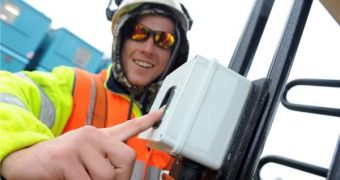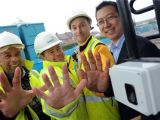As any construction-site foreman will tell you, fingerprint-recognition hardware installed at these locations oftentimes fails to provide a correct identification of the worker. This happens because their fingers, especially their thumbs, are usually damaged and bruised from all the intense labor. Scientists at the University of Warwick have recently developed a new system for detecting fingerprints that is able to recognize the individual signature of partial, distorted, scratched, smudged, or otherwise warped prints. The innovation could make the job of authorities a lot easier too, AlphaGalileo reports.
The fact that the system can be used on construction sites is only a convenient side-use for the building industry. The WU researchers created the device in hopes of allowing forensics experts to analyze badly damaged fingerprints within a few seconds, which would enable authorities to make use of the limited time-frame they had at their disposal for catching a crook as soon as possible more efficiently. The method has recently scored top marks in two very difficult assessment tests. The technical trials are the most technically challenging in the world.
“This is the first time I have seen a biometrics system that works reliably with the type of poor quality fingerprints we see routinely in the construction industry. We have already installed Warwick Warp’s BioLog system at six major sites and our customers love it because it is fast, accurate and eliminates the 'buddy punching' problems of older card based access systems,” Data Collection Strategies Managing Director Rodney Holland explains. The technology was initially marketed by Wu spin-off Warwick Warp, but DCS is now the main supplier, especially for the civil industries.
“This is a great result for Warwick Warp as NIST’s test results are used by government and law enforcement agencies when procuring fingerprint technology. Being ranked in the top three for our performance on good fingerprint data really puts us on the map with significant potential partners. Next we hope to demonstrate to these same organizations that if you were to benchmark the same companies with partial or distorted prints our technology would simply eclipse anything else currently available,” Warwick Warp Chief Technology Officer, Dr. Li Wang adds.

 14 DAY TRIAL //
14 DAY TRIAL // 
